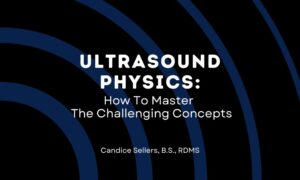3D Ultrasound is an amazing tool of modern medicine that can help diagnose patients and save lives.
What is 3D Ultrasound?
For much of our history, knowledge of the human body and our working systems has been only skin deep. Anatomical studies and drawings allowed us to expand our understanding of how our bodies function, but it wasn’t until recently that modern medicine has been using sound waves to see living organs in action. Currently, one of the best tools to peer into the body is ultrasound, and more recently, advanced 3D ultrasound. The high-resolution 3D images produced by these types of scans are truly remarkable.
Three-dimensional or 3D multiplanar ultrasound has an additional dimension when compared with the traditional 2D-mode of ultrasound. “Two dimension looks only at surface structure – we are constantly ‘chasing the baby’ to take pictures,” describes Penn Medicine’s Department of Radiology. “3D provides the ability to look at three 90 degree planes at the same time.”
Three-dimensional refers to the ability to locate the position of an element in three dimensions. Often designated by the coordinates x, y, and z, xyz-space allows us to describe the position of any point in three-dimensional space.
How Does 3D Ultrasound Work?
Ultrasound works by “listening” to the sound waves that are directed from specialized equipment and bounced back, resulting in diagnostic imaging. In 3D ultrasound, those same sound waves are used, but this time they’re directed down at various angles, enabling the receiving equipment to “see” the image as three-dimensional. This is a process known as “surface rendering”.
What is the difference between 3D and 4D ultrasound?
Four-dimensional or 4D ultrasound is comprised of a series of 3D images. In other words, it is like 3D in motion or a video in real-time. With 4D technology, the still images produced with 3D ultrasound are played one right after another, creating a moving picture in real time. 4D adds the dimension of motion so it appears more like a video.
How do I become a 3D Ultrasound Provider?
If you are interested in becoming a 3D or 4D ultrasound provider, the typical path is first earning your associate’s degree in diagnostic medical sonography.
An associate’s degree from a CAAHEP accredited sonography program will provide you with the education and training to work as an ultrasound tech, and also to explore other specializations within the field.
Most educational programs do not offer a specific 3D/4D degree option; however many schools do offer training in this area as part of their regular curriculum. Training options do vary from schools to school, and we encourage students to contact colleges in their area to learn more.
Once you’ve earned your degree, you will be eligible to sit for Sonography Principles & Instrumentation (SPI) examination, administered by the The American Registry for Diagnostic Medical Sonography® (ARDMS®). While certification from the ARDMS® is not required for all employers, most prefer this level of training and expertise.
3D Ultrasound History
Three-dimensional ultrasound and its use in medicine is a relatively new addition to a physician’s toolkit. The 3-D Multiplanar scanner was developed through the work of Thomas Graham Brown, who invented 3D Multiplanar scanner and brought it to market in 1975. A pioneer in the field, Brown played an important role in the history of ultrasound and was inducted into the Scottish Engineering Hall of Fame in 2014. Kazunori Baba of the University of Tokyo developed 3D ultrasound technology and captured three-dimensional images of a fetus in 1986.
Keep Scanning: An Overview of Ultrasound History and Discovery
3D Medical Ultrasound techniques continue to expand in the fields of medical imaging and diagnosis. Today, it is often used in cardiology, obstetrics, surgical guidance, vascular imaging, respiratory care, and regional anesthesia.
As diagnostic medical imaging advances, the demand for this technology and the opportunities in the field continue to grow.
3D Ultrasound During Pregnancy
Advancements in 3D and 4D ultrasound have allowed parents, not to mention obstetricians, physicians, and diagnostic medical sonographers, to observe more details of babies developing inside the womb.
For parents expecting a baby, one of the most exciting moments during pregnancy is their first prenatal ultrasound. During a prenatal ultrasound, most expectant parents want to see as clear a picture as possible.
Hearing and seeing your baby’s heart beat for the first time can be a life-changing experience. Using this technology, ultrasound technicians provide us with this enhanced view into the growing baby’s world.
The majority of women will have an ultrasound at some point during their pregnancy, and most of us are familiar with the traditional 2D ultrasound, used to determine gestational age, sex, and health of the fetus. It produces flat images that show the outlines of the internal organs of the baby, which can be helpful in diagnosing a variety of abnormalities.
Benefits of 3D and 4D Ultrasound
3D and 4D ultrasound are better able to detect abnormalities among developing fetuses versus 2D ultrasound. These more advanced ultrasound technologies are often used to image mothers with high risk pregnancies.
Abnormalities among fetuses could be physical, like a cleft palate or clubfoot. Heart abnormalities can also be detected using 3D ultrasound with Doppler technology, Penn medicine adds. More specialized ultrasound, especially 4D ultrasound, can even help detect behavioral concerns, helping to diagnose brain and nervous system problems.
Both the Instituto Bernabeu and Penn Medicine have discussed the psychological benefits for expectant parents upon seeing detailed images of their baby, and especially upon seeing their baby moving. This can strengthen the parental bond.
Risk of 3D and 4D Ultrasounds
As with the more traditional 2D ultrasounds, the risk involved with 3D and 4D procedures is considered to be quite low. The technology is essentially the same, with the primary difference being the advancement of the equipment receiving the ultrasound waves rather than the application of the waves themselves.
“Although there is a lack of evidence of any harm due to ultrasound imaging and heartbeat monitors, prudent use of these devices by trained health care providers is important,” says Shahram Vaezy, Ph.D., an FDA biomedical engineer. The FDA cautions against the use of non-medical ultrasound images for keepsake purposes, because of potential concerns about exposing the growing fetus to unnecessary ultrasound waves.
These typically elective ultrasounds should never be a substitute for one performed as a medical procedure by your physician, as they are not meant to be prenatal care.
Even though many expectant parents would like to have the moving images of a 4D ultrasound, the procedure is generally only prescribed when deemed medically necessary. Penn Medicine quotes Dr. Eileen Wang, a maternal fetal medicine specialist, as saying, “It is not a new form of baby entertainment but rather a very specialized technique which should be administered only by trained healthcare staff in a hospital or ambulatory care setting.”
Spain’s Instituto Bernabeu explains, “The four-dimensional ultrasound provides real-time fetal expressions (yawning, swallowing, sucking, grimacing, smiling, blinking) and various fetal movements (stretching, bending of head, isolated movements of arms and legs, etc.). It therefore allows us to study fetal neurology.”
The 3D and 4D Ultrasound Keepsake Debate
First there were sonogram photos and videos. Then there were ultrasound viewing parties. And now there are 3D-printed fetuses so you can hold your “baby” while he or she is still in the womb. Could this be the next trend in pregnancy keepsakes?
You may have heard of keepsake ultrasound companies. These companies offer 3D or 4D imaging to expectant parents, as well as snapshots, videos, and souvenirs – from key chains to images on top of cakes. Among those in the medical imaging community, there is debate about the medical need for these scans.
Organizations such as the U.S. Food and Drug Administration (FDA), American Institute of Ultrasound in Medicine, and the American Pregnancy Association caution against businesses that promote non-medical 3D ultrasound services. One concern is that most states do not regulate keepsake ultrasound businesses, meaning the operators of ultrasound equipment could be inadequately trained.
Additional information and resources about 3D ultrasound:
Other pages you might like:
- The ObGyn’s Role in Pregnancy – The important role played by these technicians
- Obstetric Sonography – Explore a career in obstetric ultrasound







